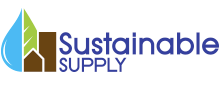5 Critical Factors Impacting Emergency Shower and Eyewash Specification and Installation
Emergency eyewash stations and safety showers can prevent permanent skin and eye damage caused by chemical burns or foreign objects produced by pouring, transporting, grinding, hammering, and more. The specification and location of emergency safety equipment are controlled by the specific needs and risks of your business as well as the requirements of standard Z358.1 from the American National Standards Institute (ANSI).
There are five factors to consider:
1. Location of Safety Equipment
According to ANSI, emergency fixtures must take no more than 10 seconds to reach, and the path to the safety station must be free from obstructions. Appendix B5 suggests that a distance of 55 feet is the appropriate guideline for the area covered within 10 seconds. The number of safety showers and eyewash stations to be made available must be evaluated when determining installation locations.
2. Assure Visibility
Visibility is a critical component in an emergency situation where one’s vision might be impaired. Therefore, ANSI requires emergency equipment to include a “highly visible sign.” The sign must be closely located to the equipment, and lighting must also be provided for the area surrounding the unit. Major manufacturers of emergency safety equipment such as Bradley, Haws, Speakman, Guardian, and others also incorporate highly visible coatings and materials that further increase the visibility of each unit.
3. Product Suitability
There are a multitude of different emergency response systems available, but even with so many choices, it’s vital that you assess the specific risks of your locations to determine the appropriate product. For example, if your company manufactures and sells many commercial cleaning products which are classified as moderate or severe eye irritants, it may not be the best solution to install an eyewash station. What if the chemical ingredients splashed onto a worker’s face, not just in the eyes? Considering the specific risks of that operation, an eye/face wash safety station would have been the most appropriate choice.
With recent product advancements made by all of Sustainable Supply’s emergency safety equipment manufacturers, the ability to address the specific application requirements of your facility, and maximize the safety of all workers, is easier than ever before.
4. Tempered Water Requirement
Tempered water is an often-overlooked requirement of ANSI Z358.1 that can have serious consequences. Water that is too hot or too cold can have negative effects on an injured worker, and those effects can cause the victim to shorten the flushing cycle from the required 15-minute time period, potentially reducing the effectiveness of the safety station. ANSI Z358.1 therefore requires water temperatures that are conducive to promoting a minimum 15-minute irrigation period. The suitable temperature range is defined as 60-100 degrees F, but with such a wide range, each hazard should be assessed individually.
5. Proper Maintenance
ANSI requires a weekly activation process intended to ensure proper operation and the performance of pre-emptive maintenance. This process requires that all eyewashes, drench showers, and drench hose systems are activated weekly. During such tests, the unit is to be checked for compliance with the numerous provisions of ANSI Z358.1.



